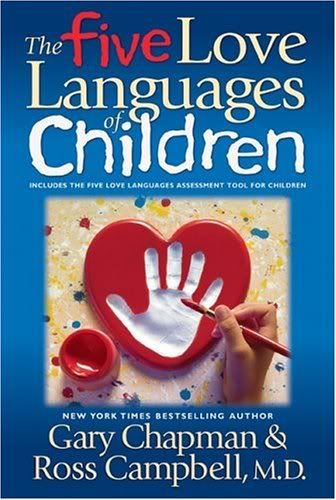I rarely read a book from cover to cover twice, but when I was given the opportunity to receive a free copy of the 2012 Edition of The 5 Love Languages of Children by Gary Chapman and Ross Campbell for review, I was eager to do so, particularly since my daughter was so young the first time I read it that I could not determine her love language at the time. To be honest, even with the Love Language Mystery Game to help determine a child's love language, I still cannot be sure of my daughter's even though she is old enough that I should be able to do so. There is nothing wrong with the concepts described in the book, I think it is just that my daughter seems pretty balanced as she receives all five gratefully and gives all five as well, which I believe suggests that her father and I successfully have been keeping her "emotional tank" full most of the time.
The book proposes that as loving as parents may try to be, a child may believe his parents love him, but may not feel loved because the parents are not speaking in the child's love language. While one child may be happy with a gift when the father comes home from a business trip, another child may not feel loved by getting a gift because his love language is quality time. This book helps parents to determine which of the five love languages--physical touch, words of affirmation, quality time, gifts, or acts of service--a child appreciates and needs the most as well as how the parent can help the child to feel loved. It also stresses that every child needs all five, but one will be predominate.
I highly recommend this book for all parents, particularly those who are having difficulties with their children, but it is beneficial even to those who think they have happy, loving children. Probably just as important as understanding how to speak in the child's love language is how to discipline with love without causing damage to the parent-child relationship by using a type of punishment that empties the emotional tank; a chapter is devoted to this subject.
If you are like me and have a 1997 Edition, let me explain the main differences I noticed between the two books, besides the change in the cover. The earlier edition often referred to keeping the emotional tank full would help to avoid drug use and teenage promiscuity, which was not in the latest edition. In the 2012 Edition, there were some updated statistics and reference to a book Battle Hymn of the Tiger Mother by Amy Chua that was published in January 2011. Some of the names in the stories had been changed to more popular names at the time of the rewrite. The most notable addition was the list of suggestions to speak the child's love language at the end of each corresponding chapter. Otherwise, there were only minor editing changes here and there. I did think that the hand print in the heart on the cover of the first edition was a better depiction than the green rubber boots with flowers, but that is a minor point.
I received this book for free from Moody Publishers in exchange for my honest review.
The book proposes that as loving as parents may try to be, a child may believe his parents love him, but may not feel loved because the parents are not speaking in the child's love language. While one child may be happy with a gift when the father comes home from a business trip, another child may not feel loved by getting a gift because his love language is quality time. This book helps parents to determine which of the five love languages--physical touch, words of affirmation, quality time, gifts, or acts of service--a child appreciates and needs the most as well as how the parent can help the child to feel loved. It also stresses that every child needs all five, but one will be predominate.
I highly recommend this book for all parents, particularly those who are having difficulties with their children, but it is beneficial even to those who think they have happy, loving children. Probably just as important as understanding how to speak in the child's love language is how to discipline with love without causing damage to the parent-child relationship by using a type of punishment that empties the emotional tank; a chapter is devoted to this subject.
If you are like me and have a 1997 Edition, let me explain the main differences I noticed between the two books, besides the change in the cover. The earlier edition often referred to keeping the emotional tank full would help to avoid drug use and teenage promiscuity, which was not in the latest edition. In the 2012 Edition, there were some updated statistics and reference to a book Battle Hymn of the Tiger Mother by Amy Chua that was published in January 2011. Some of the names in the stories had been changed to more popular names at the time of the rewrite. The most notable addition was the list of suggestions to speak the child's love language at the end of each corresponding chapter. Otherwise, there were only minor editing changes here and there. I did think that the hand print in the heart on the cover of the first edition was a better depiction than the green rubber boots with flowers, but that is a minor point.
I received this book for free from Moody Publishers in exchange for my honest review.

